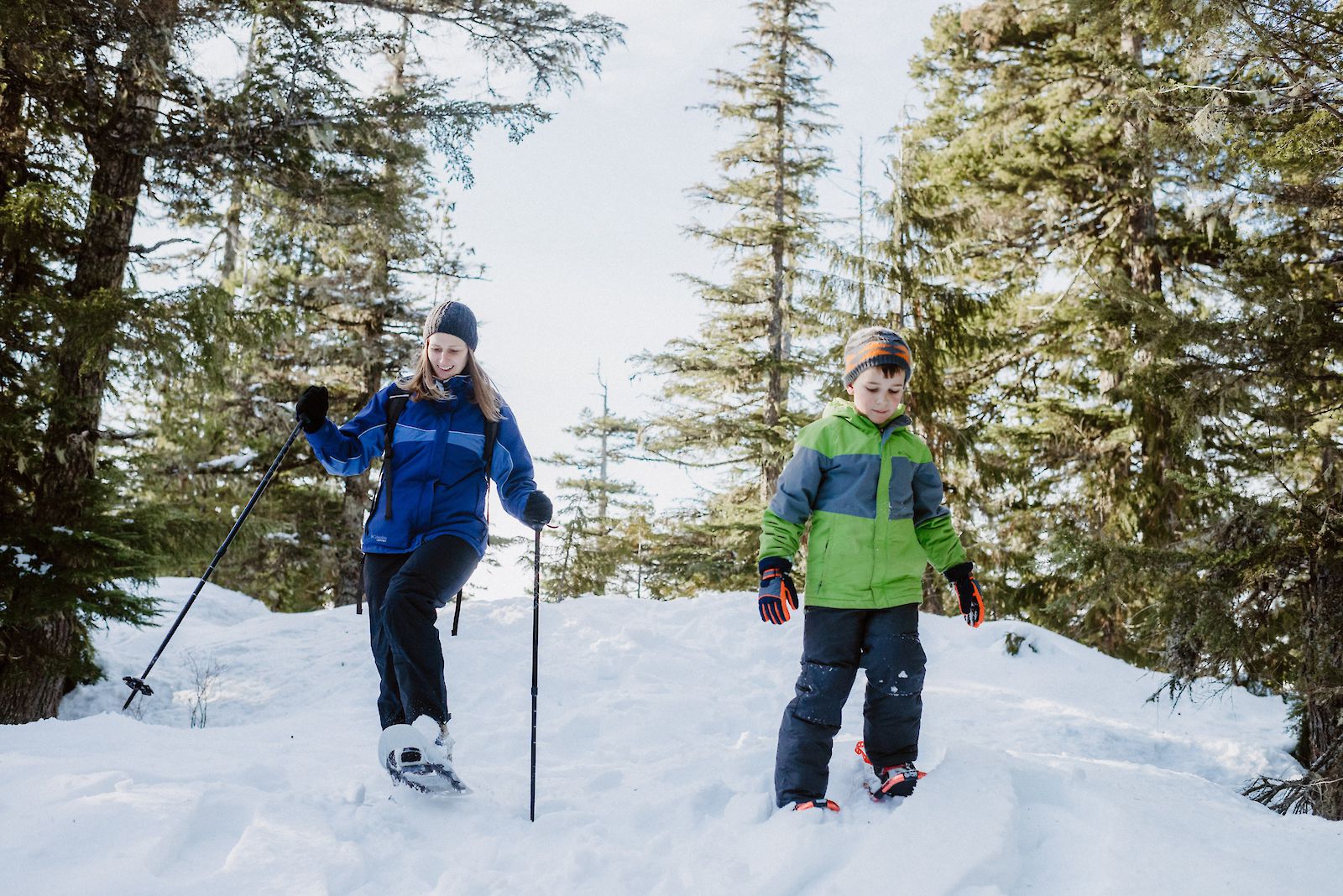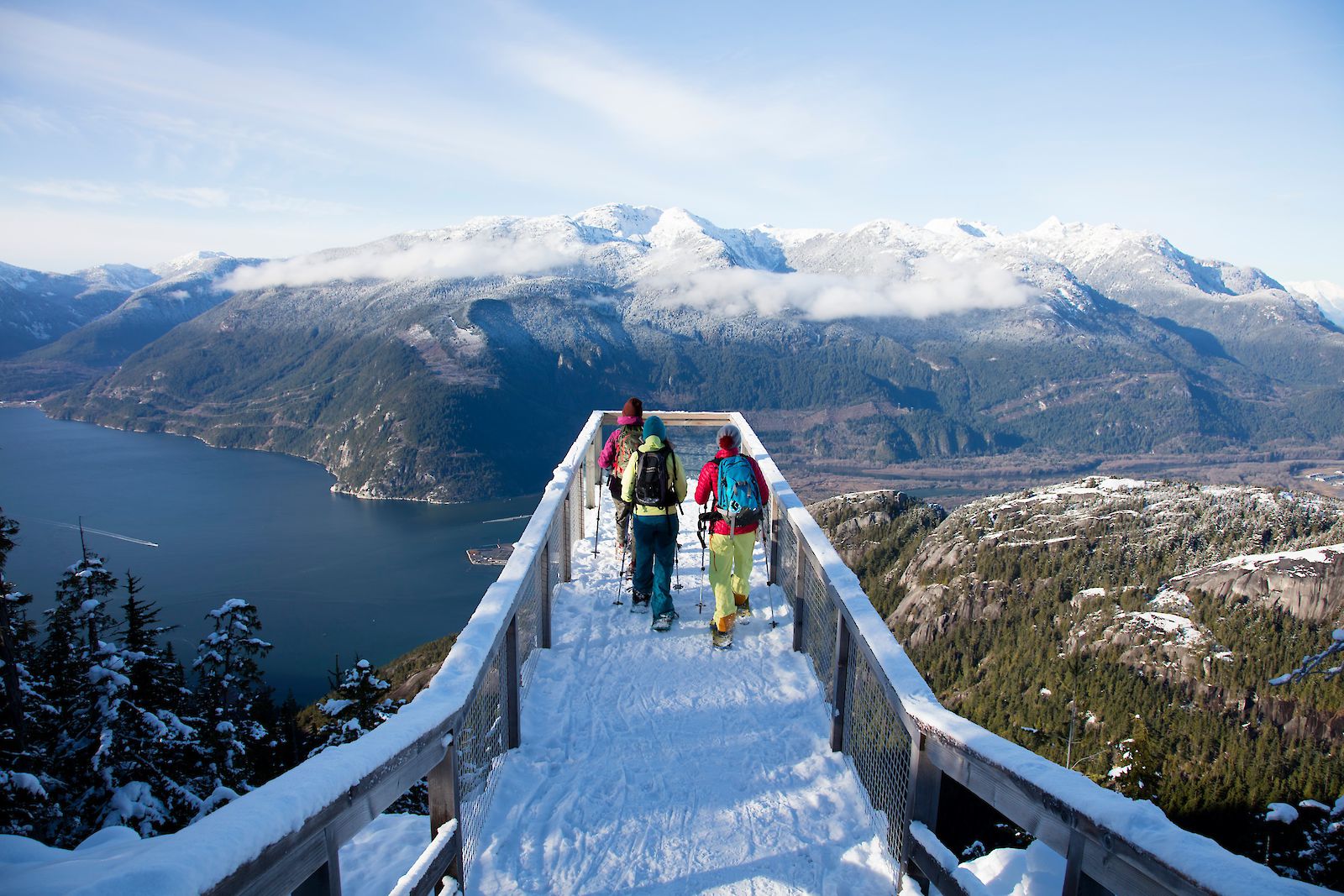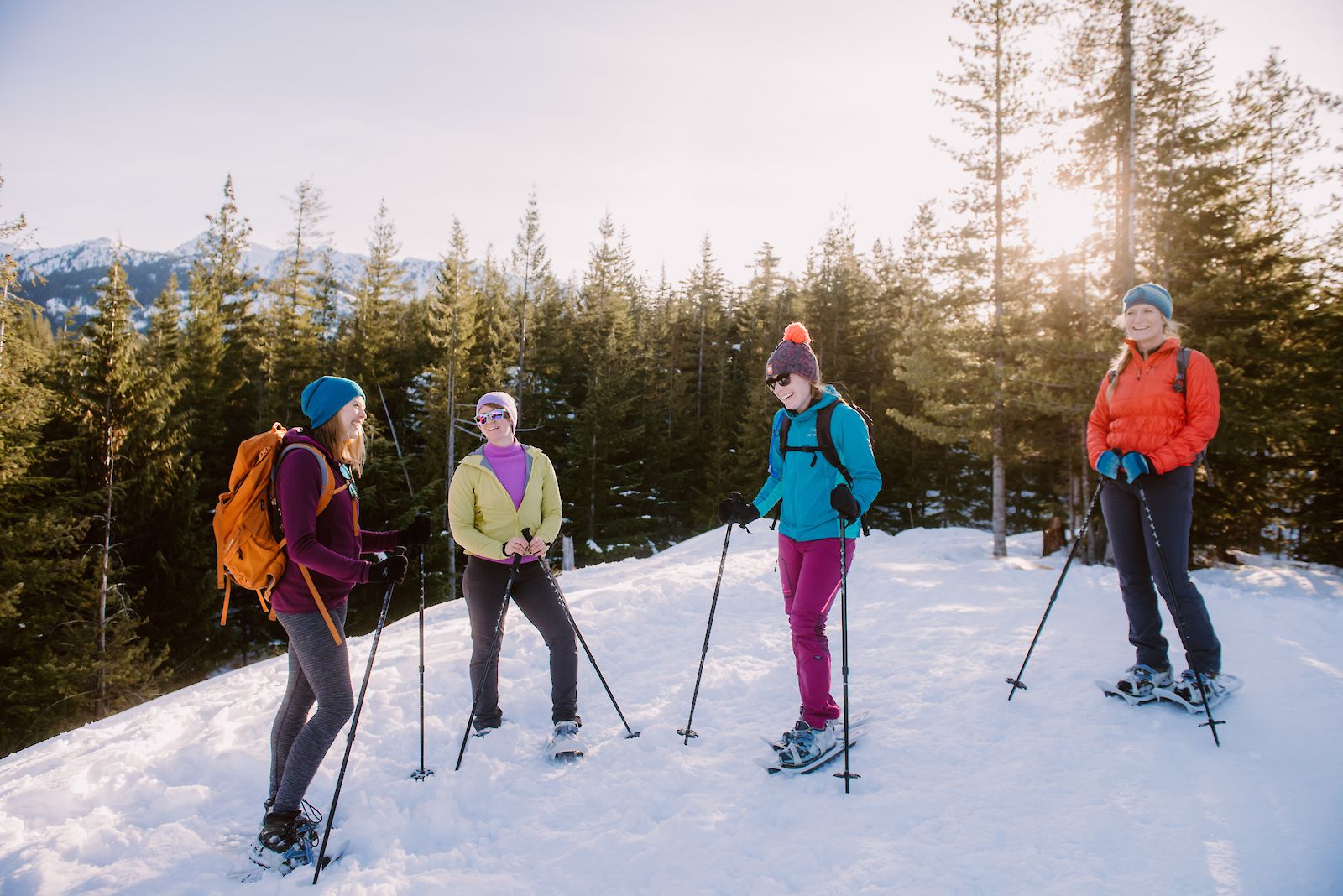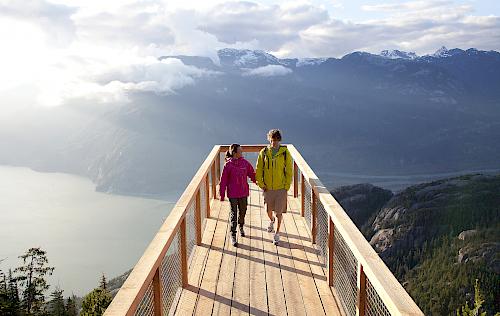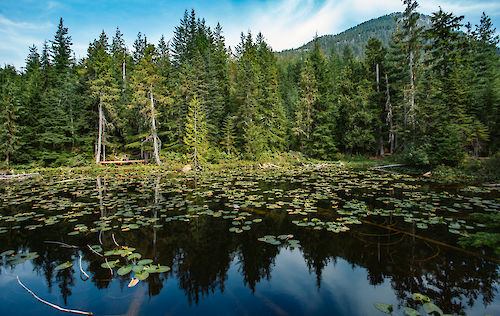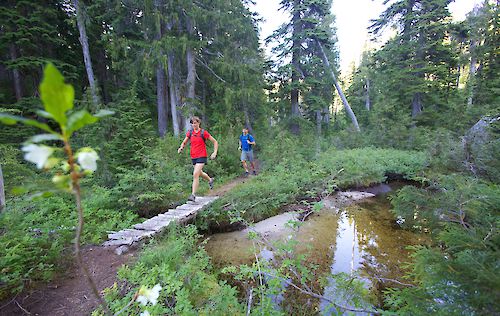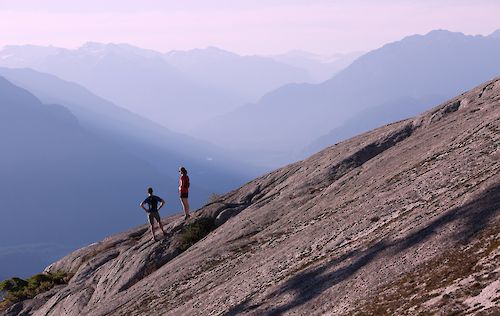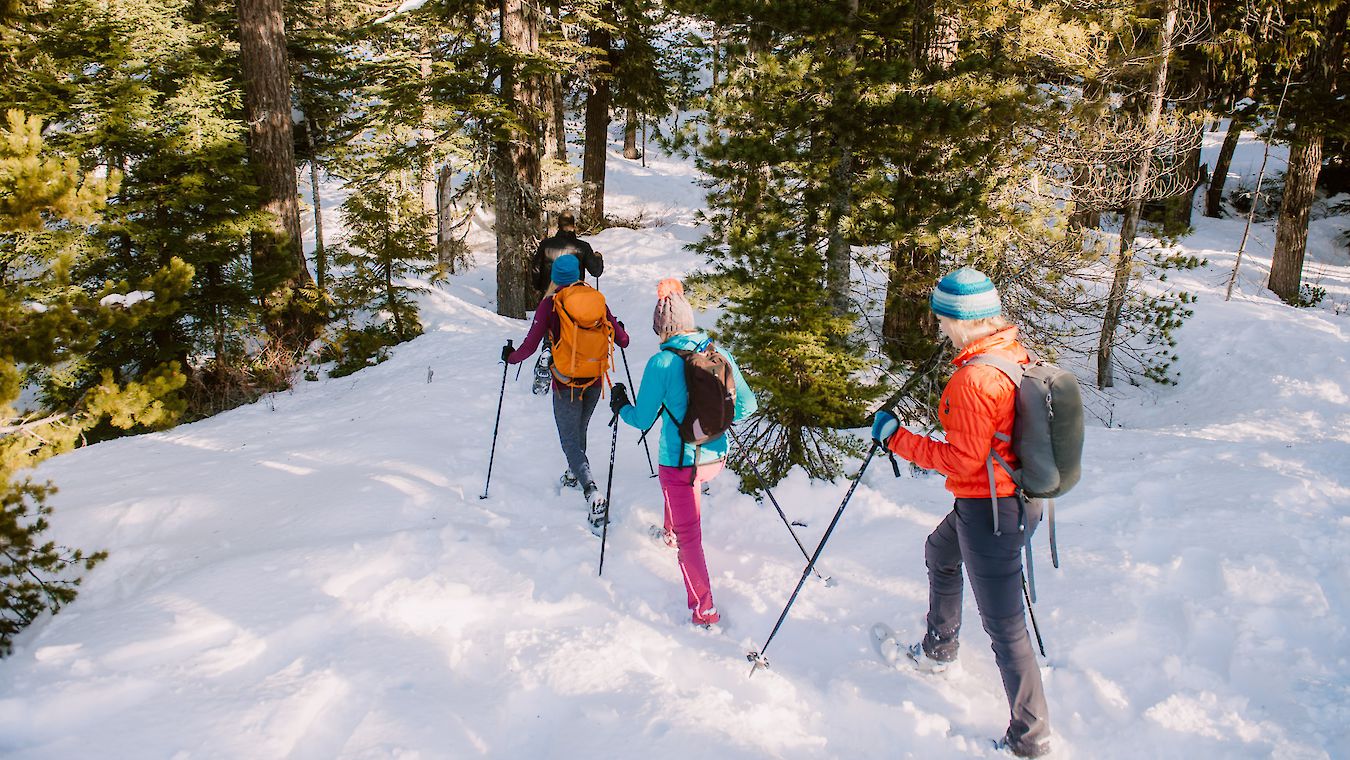
SnowshoeingEscape into our winter wonderland!
Experience winter snowshoeing as it was meant to be, quiet solitude, crisp mountain air, a snow-laden forest, and breathtaking views. The Sea to Sky Gondola region gets some of the deepest snow in North America and has a wide variety of terrain, whether you are an experienced snowshoer or a first-timer.
Snowshoe trails are open as conditions permit. Please visit our Daily Conditions for the latest trail conditions and winter activity report. Our network of trails and roads offers a huge range of options - short or long, steep or flat....your choice!
Snowshoe Rentals: Closed for The Season
| Adult (19 +) | $25 / day |
| Youth (13 - 18) | $15 / day |
| Child (6 - 12) | $10 / day |
| Add-on Poles | $5 / day |
Guided Snowshoe Tours
Get out in nature and take in the views on a guided Snowshoe Tour at Sea to Sky Gondola.
Tips for Snowshoeing
LAYER UP
Just like when you prepare for a hiking trip, it’s important to wear the proper clothing when snowshoeing. Layering your clothing is the key to staying warm and dry. If you’re already an avid hiker, you can use many of the same pieces of clothing for your snowshoeing adventures.STAY HYDRATED
Don’t forget about staying hydrated even when you’re outside in the cold. Also, make sure to pack plenty of snacks or lunch depending on how long you’ll be out for.USE SNOWSHOE POLES
When you’re first starting out, using poles is highly recommended to help you get going. Make sure the poles are the right height before you start, which should allow your elbows to be slightly bent when holding them.PRACTICE DOWNHILL TECHNIQUES
When you are starting to go down a hill, keep your knees bent and put your poles firmly in front of you. Shift your bodyweight back to avoid falling backwards. Slowly take each step with first your heel to provide stability, and then place your toe down.PRACTICE UPHILL TECHNIQUES
Going uphill can be challenging as well, especially when conditions on the trail are icy. “Kick stepping” is the most common approach, which involves quite literally kicking the front of your snowshoe to get past the snow and planting your snowshoes into the snow in front of you. This will allow you to make “steps” for yourself to safely ascend without slipping backwards.
Snowshoe Trails
![Panorama Loop]()
Panorama Loop
A meandering trail through old growth forest with viewing platforms overlooking the Howe Sound.
- Difficulty:
- Beginner
- Distance:
- 1.3 km
- Time:
- 30 - 60 minutes
![Wonderland Lake Loop]()
Wonderland Lake Loop
Wonderland Lake Loop is a true nature trail with breathtaking vistas and a boardwalk around the lake.
- Difficulty:
- Beginner / Intermediate
- Distance:
- 1.6 km return
- Time:
- 30 - 60 minutes
![Shannon Basin Loop]()
Shannon Basin Loop
The Shannon Basin Loop is a winding trail that follows the terrain around the Shannon Creek.
- Difficulty:
- Intermediate
- Distance:
- 9.7 km
- Time:
- 2 to 3 hours
![Al's Habrich Trail]()
Al's Habrich Trail
Our flagship backcountry hiking trail. Sweeping, epic views of Howe Sound and Sky Pilot.
- Difficulty:
- Advanced
- Distance:
- 5.8 km | return
- Time:
- 3 - 6 hours
